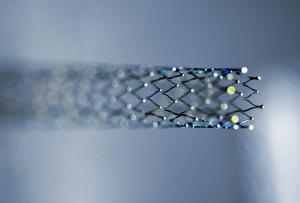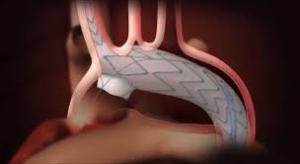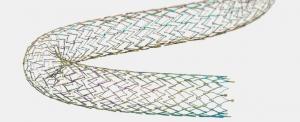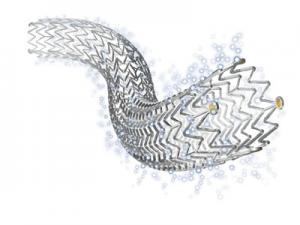According to a press release, Proximo Medical has been announced as the commercial partner for Biotronik’s peripheral vascular intervention (PVI) platform in select US markets.
Orchestra BioMed, in partnership with Terumo Corporation, today announced that the company has secured breakthrough device designation by the US Food and Drug Administration (FDA) for its Virtue sirolimus-eluting balloon (SEB) in the treatment of below-the-knee (BTK) peripheral arterial disease.
Rex Medical recently announced that it has received 510k clearance from the US Food and Drug Administration (FDA) for the Revolution Peripheral Atherectomy System.
According to a press release, Endospan has entered into strategic distribution and credit facility agreements with CryoLife. Under the terms of the agreement, CryoLife will have exclusive European distribution rights to Nexus, the first off-the-shelf endovascular stent graft system approved for the repair of both aneurysms and dissections in the aortic arch.
Two-year results of EffPac—a randomised controlled trial to assess the safety and efficacy of a novel drug-coated balloon (DCB) with a nanotechnology coating—have been announced. The investigators, Ulf Teichgräber (University Hospital Jena, Germany) and colleagues, report that use of the DCB in question, iVascular’s Luminor, resulted in a significantly lower incidence of binary restenosis compared to percutaneous transluminal angioplasty (PTA).
Twelve-month results of the BIOFLEX COF trial have demonstrated that the implantation of stents with low chronic outward force (COF) was associated with less neointimal hyperplasia, consequently resulting in less restenosis. Patients treated with Biotronik’s low COF, Pulsar stent, showed significantly lower restenosis rates than patients treated with the high COF, LifeStent implant.
New data on the use of Zilver PTX, Cook Medical’s paclitaxel-coated stent for peripheral arterial disease (PAD), confirms the safety of the device. This data was presented at the Annual Scientific Meeting of the Cardiovascular and Interventional Radiological Society of Europe (CIRSE 2019; 7–11 September, Barcelona, Spain).
Statins are linked with reduced mortality in patients with peripheral arterial disease, even when started late after diagnosis, reports a study presented recently at ESC Congress 2019 (European Society of Cardiology; 30 August–4 September, Paris, France) together with the World Congress of Cardiology. Patients who stop the drug are at similar risk to those who never start. The research shows the importance of starting and adhering to lifelong medication, preferably at a high dose.
This morning at the 2019 European Society of Cardiology (ESC) Congress (31 August–4 September, Paris, France), Pavel Osmancik (Charles University and University Hospital Kralovske Vinohrady, Prague, Czech Republic) presented the results of PRAGUE-17. These showed that left atrial appendage closure (LAAC) was non-inferior to non vitamin-K-antagonists (NOACS) for the prevention of major cardiovascular and neurological events in patients with non-valvular atrial fibrillation. However, Osmancik observed that “safety issues” with LAAC remain.
One-year data from the BIOSTEMI study, simultaneously published in the Lancet and presented today at the ESC, indicates that patients with ST-segment elevation myocardial infarction (STEMI) who undergo percutaneous coronary intervention (PCI) with an ultrathin, sirolimus-eluting stent with a biodegradable polymer (Orsiro, Biotronik) have a significantly lower rate of target lesion failure than those who undergo PCI with a thin strut everolimus-eluting stent with a durable polymer (Xience, Abbott).
This morning at the 2019 European Society of Cardiology (ESC) Congress (31 August–4 September, Paris, France), Pavel Osmancik (Charles University and University Hospital Kralovske Vinohrady, Prague, Czech Republic) presented the results of PRAGUE-17. These showed that left atrial appendage closure (LAAC) was non-inferior to non vitamin-K-antagonists (NOACS) for the prevention of major cardiovascular and neurological events in patients with non-valvular atrial fibrillation. However, Osmancik observed that “safety issues” with LAAC remain.
Nicholas (Nick) Inston calls for “more creative solutions” to vascular access challenges, commending interventional radiologists’ innovative reputation as instrumental to increasing the number of treatment approaches available to physicians. Outlining the complexities of end-stage vascular access in an ever-increasing patient population, Inston expresses the need for a multidisciplinary team approach, claiming that the “outlook is improving” due to the fruitful cross-pollination of ideas and skills.

Performance diagnostique de l’interféron gamma dans l’identification de l’origine tuberculeuse des pleurésies exsudatives

A Mixed Phenotype of Airway Wall Thickening and Emphysema Is Associated with Dyspnea and Hospitalization for Chronic Obstructive Pulmonary Disease.

Radiological Approach to Asthma and COPD-The Role of Computed Tomography.

Significant annual cost savings found with UrgoStart in UK and Germany

Thrombolex announces 510(k) clearance of Bashir catheter systems for thromboembolic disorders
Phone: (028) 3981 2678
Mobile: 0903 839 878 - 0909 384 389



















